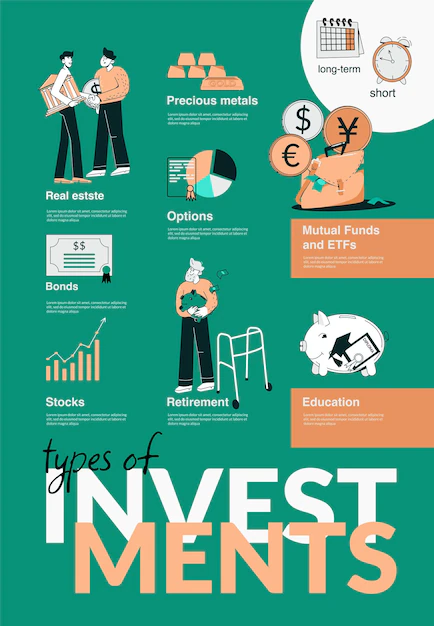Is It a Good Time to Invest in Bonds? In today’s volatile market, investors are constantly seeking safe and profitable opportunities. Bond funds have emerged as an attractive option, particularly amidst the recent decline in long-term interest rates.
This article explores the advantages of investing in bond funds, with a focus on the ICON Flexible Bond Fund managed by Jerry Paul. We will delve into the reasons why now may be a good time to consider investing in bonds and analyze the unique strategies employed by Paul to maximize returns for his investors.
Understanding Bond Investments
Before we delve into why it may be a good time to invest in bonds, let’s first understand the mechanics of bond investments. A bond’s face value represents the amount the bondholder will receive upon maturity. The interest rate, known as the coupon, is based on the face value. When interest rates rise after a bond is issued, its market value decreases, resulting in a higher market yield compared to newly issued bonds. Conversely, if interest rates decline, the bond’s market value increases, leading to a lower market yield. These fluctuations present opportunities for investors to capitalize on discounted bonds for higher yields or potential capital gains.
The Current Bond Market Landscape
Over the past two months, long-term interest rates have experienced a rapid decline. This has prompted income-seeking investors to pour cash into bonds, either to secure higher interest rates or position themselves for future capital gains. The recent economic projections released by the Federal Reserve, indicating potential rate cuts in 2024, further support this trend. Consequently, it may be an opportune time to explore bond investments.
The ICON Flexible Bond Fund
Managed by Jerry Paul for the past 20 years, the ICON Flexible Bond Fund has consistently delivered impressive results. This fund, currently rated four stars within Morningstar’s “Multisector Bond” category, offers income-seeking investors a compelling option. The fund’s institutional shares are available through various investment advisers and brokerage platforms, such as Fidelity and Charles Schwab. With assets under management totaling $250 million, the ICON Flexible Bond Fund competes with larger players in the market, thanks to its ability to take advantage of specialized opportunities.
Unique Strategies for Superior Returns
Jerry Paul’s approach to managing the ICON Flexible Bond Fund sets him apart from larger bond portfolio managers. He focuses on identifying and capitalizing on special opportunities that may not be accessible to his competitors. One such example is the inclusion of airline equipment trust securities in the fund’s portfolio. These securities, collateralized at approximately 125%, provide higher yields due to their crossover rating and the unique position of the investor as a second-lien holder.
Evaluating Risk and Reward
Understanding credit risk is essential for bond portfolio managers. Paul’s extensive experience in evaluating credit risk enables him to make informed investment decisions. He highlights the importance of collateral, citing an example from the 1980s when he had to navigate the oversupply and default of railroad boxcar financing. By carefully considering collateral, Paul aims to protect investors and maximize returns.
A Yield Advantage
One of the key factors that make the ICON Flexible Bond Fund an attractive investment option is its yield advantage over comparable benchmarks. With a 30-day SEC yield of 7.13% as of September 30, the fund outperforms the Bloomberg U.S. Universal ex MBS Index’s yield-to-worst of 5.02% and the 10-year U.S. Treasury notes’ yield of 3.92%. This yield advantage makes the fund an enticing proposition for income-seeking investors.
Investment Advisers’ Recommendation
Investment advisers recommend the ICON Flexible Bond Fund to clients for various reasons. Some consider it a conservative high-yield fund, while others perceive it as an alternative investment or appreciate its short average effective duration of less than three years. It’s important to note that this fund may not be suitable for the most conservative investors due to its concentrated positions and specific investments in airline trust paper.
Major Holdings
As of September 30, the ICON Flexible Bond Fund held significant positions in securities issued by Bank of America Corp., Fifth Third Bancorp, Prudential Financial Inc., Citigroup Inc., and United Airlines Holdings Inc. These holdings reflect the fund’s diversified approach, which combines various sectors and issuers to manage risk and optimize returns.
Is It a Good Time to Invest in Bonds? – FAQs
1. What are bonds and how do they work?
Bonds are debt securities that represent a loan made by an investor to a borrower (typically a government or corporation). In return, the borrower pays periodic interest and returns the principal amount at maturity.
2. Why consider investing in bonds?
Bonds are often seen as a conservative investment, providing fixed income and relative stability compared to more volatile investments like stocks. They can be part of a diversified investment portfolio.
3. What factors determine whether it’s a good time to invest in bonds?
Several factors influence bond investments, including interest rates, economic conditions, inflation, and the overall market environment. Investors should analyze these factors to make informed decisions.
4. How do interest rates impact bond investments?
Generally, when interest rates rise, bond prices fall, and vice versa. Investors should consider the current interest rate environment to assess potential risks and returns associated with bond investments.
5. Is it currently a good time to invest in bonds given the economic conditions?
The answer depends on various factors, including your investment goals, risk tolerance, and the prevailing economic conditions. Consulting with a financial advisor can help tailor your investment strategy to your specific situation.
6. What are the different types of bonds, and do they react differently to market conditions?
Bonds come in various forms, such as government bonds, municipal bonds, corporate bonds, and high-yield bonds. Different types of bonds may react differently to changes in interest rates and economic conditions, so it’s crucial to understand the nuances of each.
7. How does inflation impact bond investments?
Inflation erodes the purchasing power of money over time. While bonds provide fixed interest payments, high inflation can diminish the real return on investment. Investors should consider the potential impact of inflation on their bond portfolios.
8. Are there any risks associated with investing in bonds?
Yes, bond investments carry risks, including interest rate risk, credit risk, and inflation risk. Understanding these risks and diversifying your portfolio can help manage potential downsides.
9. Should I consider other investment options besides bonds?
The appropriateness of bonds depends on your investment goals and risk tolerance. Consider diversifying your portfolio with a mix of assets, including stocks, to achieve a balanced and well-rounded investment strategy.
10. How can I stay informed about the bond market and make well-informed investment decisions?
Stay updated on economic indicators, interest rate trends, and global financial news. Regularly review your investment strategy and consult with financial professionals for personalized advice based on your financial goals and market conditions.
Conclusion
In conclusion, the current market conditions present a favorable environment for investing in bonds, particularly through funds like the ICON Flexible Bond Fund. Jerry Paul’s specialized strategies and ability to identify unique opportunities offer investors the potential for higher yields and capital gains. However, it’s essential for investors to carefully evaluate their risk tolerance and suitability for such investments. By considering the ICON Flexible Bond Fund and its unique approach, income-seeking investors may find a compelling option to navigate the bond market in these uncertain times.





